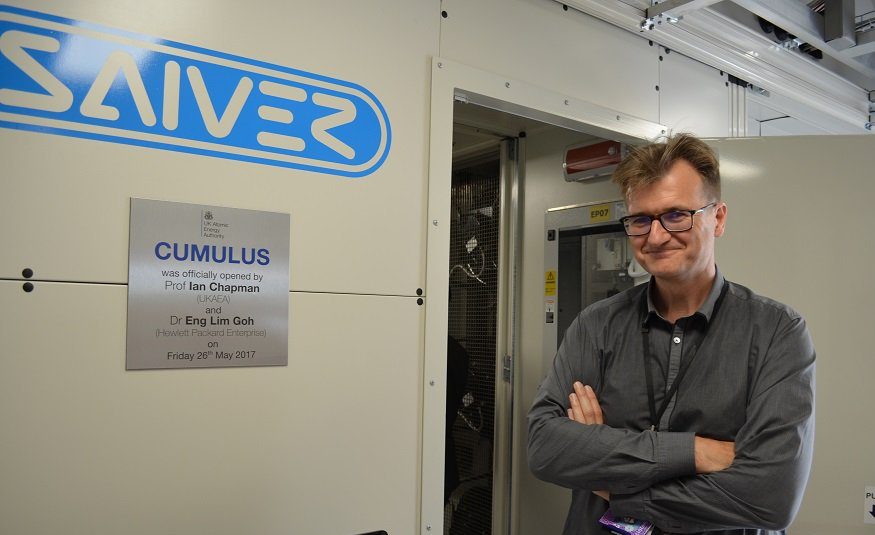
Since June Culham Centre for Fusion Energy (CCFE) provides a new facility to fusion scientists, named the CUMULUS Modular Data Centre. The centre contains a new cloud-based computing platform that promises to process scientific data quicker, cheaper and more accurately than ever before.
Scientific computing is an essential technology for assimilating and understanding the large quantities of data that are now commonplace in the fusion community, as well as carrying out complex predictive simulations of tokamak plasmas. To give an idea of where we are heading, the next-generation fusion experiment ITER will generate 2 petabytes of raw data each day (2,000 trillion bytes), more than JET has produced in its entire 34-year history!

Scientists around the world are grappling with how to deal with data volumes such as these. “Fusion scientists and engineers always need more processing power. By targeting a cloud-based infrastructure, we will be able to provide this and link to other larger machines with cloud interfaces. In doing so we can get access to orders of magnitude more computing power”, explained Rob Akers, Head of Advanced Computing at CCFE.
For this initial phase, CCFE has installed two of the twelve final racks, with a total of 1128 cores, 18 terabytes of RAM and 170 TB of high-performance storage. Moreover, as a cloud-based system, it will also be available to users across the international fusion community to take advantage of its capabilities and promote collaborative research.
CCFE’s Neutronics Group has already started to use the facility to simulate nuclear interactions in detailed computational models that will help engineers understand the effects of radiation on component design. Neutronics researcher Andrew Turner commented: “The model initiation time that previously took days now takes just hours. The memory available on the CUMULUS nodes will enable a complete step-change in our neutronics modelling capabilities”.
Source: CCFE
